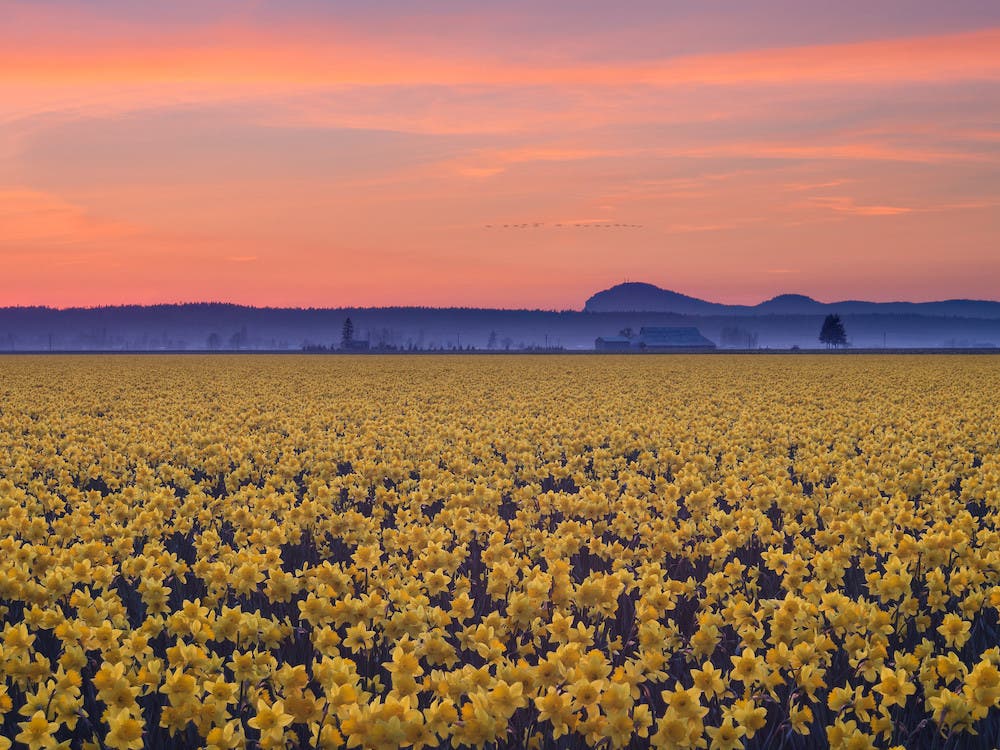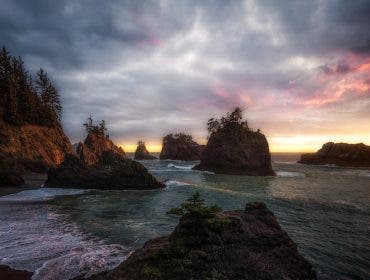Nature photography encompasses a vast array of subject matter and shooting scenarios. Although, I’m going to limit this article to discussing camera settings for “classic” landscape nature photography. Much of what I mention can be incorporated into other genres, so it’s worth learning the principles and reasoning behind the specific settings.
Let me start by briefly discussing the gear I carry for most of my nature and landscape shots. I use a full-frame camera (Sony a7r IV) along with an ultra-wide angle (Sony 16-35mm f/2.8 GM) lens and a standard/mild telephoto (Sony 24-105mm f/4 G) lens. I also carry a sturdy tripod and various screw-on filters.
Once you’ve set up your system and decided on a composition, here are my recommended camera settings to capture the classic landscape photograph with a large depth of field and noise-free images.
Recommended Camera Settings for Nature Photography
- Choose Manual Exposure Mode
- Choose a Narrow Aperture Value (e.g., f/8 – f/16)
- Set ISO to Lowest Native Value (e.g., ISO 100)
- Make Histogram Visible
- Turn OFF Auto-Focus
- Shoot in RAW Image File Format
- Disable In-Camera Long Exposure Noise Reduction
- Turn Off Built-in Flash (if applicable)
- Use a Remote Shutter Release

Choose Manual Exposure Mode
Nature photos are often taken during difficult and low-lighting conditions. Allowing the camera to decide the aperture, ISO, and shutter speed is a recipe for disaster. Most cameras will try to minimize shutter speed by opening the aperture to its maximum amount and bumping up the ISO. This can lead to noisy and shallow depth of field photos. Our goal is the exact opposite: large depth of field and noise-free images. In order to achieve this, we must manually set the three values of the exposure triangle.
Choose a Narrow Aperture Value
To maximize depth of field, we need a narrow aperture. I typically start at f/8 and go as far as f/16 on a full-frame camera. If you’re using a crop-sensor camera, you may be able to get away with f/5.6. However, I don’t recommend closing the aperture more than f/16 on full frame and f/11 on crop sensors because you can introduce unwanted diffraction-associated softness to the image. There are exceptions to this rule, but it’s a good place to start.
Set ISO to Lowest Native Value (e.g., ISO 100)
The lowest native ISO value ensures you’re maximizing the sensor’s dynamic range and minimizing noise. Be careful to not choose an ISO value lower than the native ISO (i.e., extended ISO values), because you’ll be sacrificing dynamic range.

Make Histogram Visible
The histogram is basically a way for you to make sure your image will be properly exposed. Once you’ve set the aperture and ISO values, the histogram will indicate if your image is properly exposed or not. You’ll set your shutter speed based on the appearance of the histogram. If the histogram is displaced to the extreme left, it means the image will be too dark (underexposed). Conversely, an overexposed image will have the histogram shifted way to the right. Try to keep the histogram centered. I like using the histogram because relying on how the image looks on the back of the LCD screen for proper exposure can be misleading — especially during very bright conditions.
Turn Off Auto-Focus
In order to maximize depth of field, you typically want to manually focus about 1/3 of the way into the scene. If you use auto focus, the camera might not choose the correct focus point or may hunt for focus because of low light. By using manual focus, you’re deciding exactly where the focus position will be.
Shoot in RAW Image File Format
I’ve always said: shoot in RAW because memory is cheap, but memories are priceless. Yes, RAW format uses much more space than JPEG on your memory card, but aren’t your memories worth it? RAW allows you to adjust important parameters such as white balance, noise suppression, exposure, saturation, and many others during post-processing.

Disable In-Camera Long Exposure Noise Reduction
If Long Exposure Noise Reduction is left on, you’ll have to wait twice as long to take your next shot. For example, let’s say the exposure time is 20 seconds. You would have to wait an additional 20 seconds after the camera finishes capturing the image before you could take another shot. With modern sensors, there’s no reason to leave this setting on.
Turn Off Build-in Flash
Many cameras have built-in flash and, unless you turn it off manually, it might engage during low-light conditions. Since you’re controlling the light with manual settings, there’s no reason to have the built-in flash turned on or set to auto.

Use a Remote Shutter Release
Once everything is ready, the last step is to use a remote shutter release to trigger the exposure. You may need to go into your camera settings and enable this feature if you’re using a wireless remote. Using a remote allows you to maximize image sharpness by making sure no camera shake is introduced by physically touching the shutter button. If you don’t have a remote with you, using the camera’s timer function is the next best option. You’ll have to touch the shutter button, but with a long enough delay (I recommend at least 3 seconds), any shake/vibration you cause will have dampened away.
These are some fundamental recommendations to help you capture amazing nature shots. If you implement these camera settings for nature photography outings, they will become second nature!






